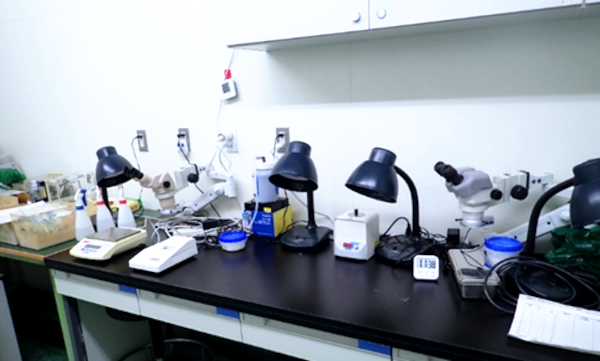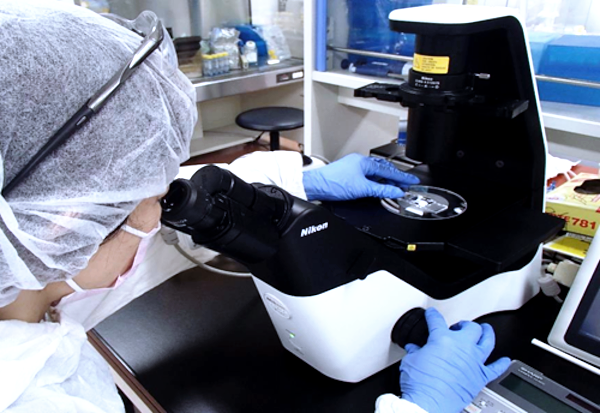
Service Overview
We performed sample collection, pretreatment, and provision for high-quality DNA extraction using genetically modified mice entrusted to us by the client for colony maintenance. We consistently provide optimal sample collection and processing to obtain high-quality DNA that can be utilized as a foundation for genetic analysis, metabolic disease model validation, and drug discovery screening.
Contract Procedure Flow
①Discussion of study design and sample preparation methods
②Acceptance of client-designated mice (SPF conditions)

③Euthanasia and sample collection (various organs and blood)

④Sample freezing and storage (−80°C) or same-day shipment

⑤Quality checks (concentration, purity, integrity)

⑥Delivery and preparation of a data-attached report
Our Strengths:
・Integrated Contract Research System Enabling Efficient Scientific Support
We offer a one-stop service covering everything from breeder-level, top-quality maintenance and production of genetically modified animals to various tests, measurements, and sampling services performed using those animals.
・Standardized Processes Ensuring Quality and Reproducibility
We maintain an integrated management system covering collection, preservation, and transportation of blood and organs, adopting quality standards that can accommodate diverse client needs.
FAQ
Q: What are the advantages of outsourcing to CLEA Japan ?
A: We conduct highly reliable studies under a global-standard animal welfare system, secured by a breeding management structure that guarantees the highest level of animal quality—equivalent to that of CLEA Japan, Inc.—and maintained by over ten years of continuous AAALAC accreditation.
Q: Can I request drug administration studies using genetically modified mice obtained from other companies?
A: Yes, as long as you are permitted to reproduce the animals. (There are some exceptions; please contact us.)
Q: Can we consult with you about designing dosing schedules or drug concentrations?
A: Yes. Based on our past contract experience, we can advise on schedule design tailored to strain characteristics and metabolic profiles. This service is also useful for dose-setting studies in the early stages of drug discovery.
Recommended for the Following Needs:
- Researchers who want to accelerate candidate compound screening in the early stages of drug discovery
- → Obtain highly reproducible data even with a limited number of mice.
- Those seeking efficacy evaluation using specific genetically modified mice, such as metabolic disease or cancer models
- → We support dosing and sampling designs optimized for each disease model.
- Drug discovery teams that want to focus their research resources on analysis and interpretation
- → Everything from animal maintenance to dosing, sampling, and disease model preparation can be outsourced as a package.
Performer Interview
Q1. What types of clients most frequently request your services?
We often receive inquiries from pharmaceutical companies and biotech venture companies.
For pharmaceutical firms, I believe our high animal quality and welfare–focused operations (we are AAALAC-accredited) are highly valued.
Venture companies often expect flexible support. In fact, we strive to accommodate detailed requests as much as possible, such as restrictions related to reagents or handling of specific cell types.
Academic researchers also use our services, mainly for smaller-scale studies. We are sometimes asked to assist with data collection for manuscript preparation.
We once received an unusual request from a client who brought their own “light-irradiation device” and asked us to perform irradiation under specific conditions. This required fine adjustments such as darkroom settings, but we worked creatively within feasible limits. The client was an expert in optics but had limited experience in animal studies, so we were able to support them from the perspective of animal experimentation.
Q2. How frequent are contracted studies, and what aspects are rewarding or challenging?
I handle approximately 30 contracts per year, or around 40 including ongoing projects. Of those, roughly 10 involve genetically engineered mice.
Personally, I find studies involving tumor-bearing models particularly rewarding. They give a strong sense of contributing to cutting-edge research, and they heighten the sense of responsibility on site.
For pharmacology or pharmacokinetics studies, when staffing and facility scheduling align smoothly, there is a great sense of accomplishment.

On the other hand, projects with very tight timelines or major mid-study design changes can be difficult. We want to respond to “urgent” requests whenever possible, but adjustments are sometimes necessary due to limited resources.
When strict study conditions make it likely that animals may weaken during the experiment, we proceed only after thoroughly explaining the risks to the client. Conveying on-site experience can sometimes be challenging, and we continuously look for better ways to communicate.
Q3. What aspects are you particularly careful about during studies?
Protocol compliance, animal welfare, and infection control—these three points are always top of mind.
One memorable case involved working with a disease model presenting systemic symptoms. Many symptoms that were not fully anticipated in the study plan appeared, so we devised multiple supportive measures onsite:
- Switching to jelly-type food
- Adjusting container placement and shape to make feeding easier
- Adding shelter-type enrichment for animals with limited mobility
- Providing thermal support
- Reviewing endpoints and strengthening monitoring systems
At CLEA Japan, we have an internal certification system for symptom assessment and general disease observation, and our staff receive ongoing training. I believe these efforts enhance our ability to respond effectively onsite.
Q4. What do you see as CLEA JAPAN’s strengths?
Our team is capable of providing highly flexible support. Even for unfamiliar procedures, we avoid dismissing requests outright and instead work with clients to determine how we can meet their needs while maintaining reproducibility.
Because changes in SPF environments can reduce reproducibility, continuing studies at CLEA JAPAN also enables us to deliver more stable data.

Our staff undergo continuous training so that we can be evaluated highly on technical grounds as well.
Q5. Are there optional services you can provide?
We try to remain as flexible as possible to ensure studies can be completed.
For example, we can work with clients to determine the most convenient format for sharing image data.
For services that are difficult to handle internally, we can coordinate external outsourcing. All payments can be consolidated through CLEA JAPAN, minimizing the client’s administrative burden.


